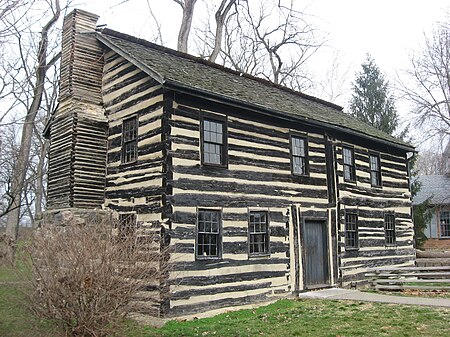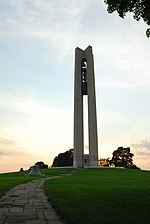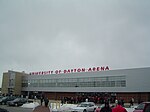Newcom Tavern
1796 establishments in the Northwest TerritoryHouses completed in 1796Museums in Dayton, OhioRelocated buildings and structures in OhioRelocated houses

Newcom Tavern, also known as the "Old Cabin", is an historic structure in Dayton, Ohio and is the city's oldest existing building. It was built in 1796 for Colonel George Newcom and his wife Mary, who ran it as a tavern and hostel. The building passed through several owners, and its historical significance was forgotten until planned construction revealed the original log structure. The building was moved twice and now located in Dayton's Carillon Historical Park and operated as a museum.
Excerpt from the Wikipedia article Newcom Tavern (License: CC BY-SA 3.0, Authors, Images).Newcom Tavern
Carillon Boulevard, Dayton
Geographical coordinates (GPS) Address Nearby Places Show on map
Geographical coordinates (GPS)
| Latitude | Longitude |
|---|---|
| N 39.728721 ° | E -84.200186 ° |
Address
Carillon Boulevard
45409 Dayton
Ohio, United States
Open on Google Maps




